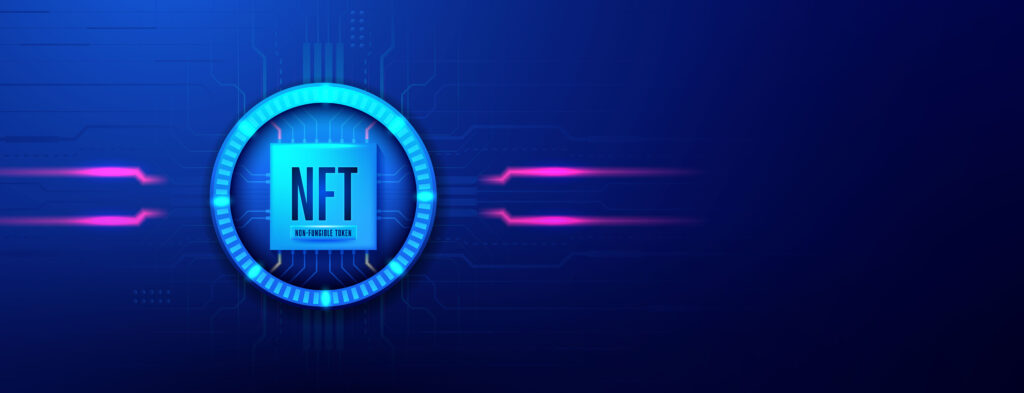
Non Fungible Tokens – NFTs have come to the market in recent times and are becoming a big part of blockchain technology. It seems everyone is taking about NFTs. The NFT movement has been embraced by everyone from Taco Bell to Twitter’s Jack Dorsey. A digital artist whose artwork sold for 69 million dollars recently sold a NFT for another eye-watering amount. NBA Top shots have seen huge success with their digital trading basketball cards that feature highlights of great plays. In the first 6 months of starting NBA Top Shots has seen $500 million in sales. This comes to people asking what is NFTs? where did it come from and their sudden rise in demand? How is it connected to Cryptokitties.
We’ll help you demLet’s take a look at the current internet phenomenon-NFT-and explore some of its implications and implications.
What is an NFT?
NFT, which stands for Non-fungible tokens, are basically digital media that can’t be duplicated due to blockchain technology; the digital media can be anything- art, videos, music, text, games, GIFs, code or even memes. That’s the oversimplified definition, now let’s break down the term- Non-fungible basically means the nature of the item in question does not allow it to be easily exchangeable, thereby making it unique. For example, one US dollar can be exchanged for another US dollar, and it doesn’t matter which one you hold as they are all essentially the same that makes the US dollar fungible and non-fungible is the exact opposite of that, a basketball signed by Michael Jordan with your name on it cannot be easily exchanged with any other basketball. The second part of the term- Token indicates that the NFT is an item on the blockchain whose existence has been permanently recorded from inception, and any changes that happen to the item-sale, purchase etc., will be permanently recorded as well. The fundamental quality of NFT that can truly revolutionize the digital art market is that NFT paves the way for digital art to be subjected to the forces that drive the art market- context and scarcity.
For example, an NFT of American basketball player Zion Williamson blocking a shot was recently bought for $100k (USD) on NBA Top Shot; there were 50 NFTs in that series, all containing the same highlight, but what makes them distinct is that each one had a different number and the NFT that sold for $100k (USD) was number one in the series. So you are basically paying for the scarcity but not uniqueness as there’ll only be 50 of these NFTs in the world.
What is the origin story of NFT?
While the origin of NFTs can be traced back to at least 2014, it rose to popularity during the Cryptokitties mania of 2017 when people started pouring thousands of dollars on a blockchain-based game where players breed and trade digital cats. The game, which was built by Vancouver, Canada based Dapper Labs, is essentially a digital version of Pokemon cards but is based on the Ethereum blockchain (Bitcoin’s more useful alternative). The game had 100 Founder Kitties, and there are new Gen O kitties that are released every 15 minutes which can be bought with ETH (Ether). Kittens can also be created by breeding them, and anyone can sell their kittens through an auction. It is interesting to note that Andreessen Horowitz backed Dapper Labs also created NBA Top Shot.
Why did they become popular now?
The marketplaces for NFTs like OpenSea, SuperRare and NiftyGateway are easier to use and more welcoming of newcomers now than at any time in the past.
As we spend more time on our gadgets, the line between our digital life and the life we lead in the physical world starts blurring, and the pandemic accelerated this trend, so we are now more comfortable in owning digital assets.
Mirrors the broader surge in real-world collectables, such as the resurgence of interest in baseball cards.
What are the benefits of using NFTs?
Helps remove rent-seeking intermediaries– Once you purchase an NFT, it belongs to you, and it’s fully under your control, similar to buying books in the real world. Ultimately blockchain-based ownership shifts the power back to users and creators, putting a wedge in the business model of algorithm-based social media websites.
Allows for granular price tiering– NFTs can allow creators to offer costlier items to their most passionate fans, and NFTs can be easily sliced into a descending series of pricing tiers. The NBA Top Shot cards can be bought for anywhere between a few dollars to over $100K (USD). It essentially allows creators to capture a larger area under the demand curve.
Reduction in customer acquisition costs– By making the users the owners, NFTs drastically reduce the customer acquisition costs. Cryptocurrencies have grown to over $1 trillion (USD) in aggregate market capitalization with little to no marketing spend. NBA Top Shot, which has generated $200M (USD) in gross sales in Jan 2021, has spent very little on marketing.
Smart contracts– Smart contracts are codes in NFT that dictates ownership and can be used for a wide variety of purposes. They can be used to program royalty into the NFTs so that the creators earn a percentage of revenue in perpetuity every time the NFT is sold. They can also allow the artist to program future changes to his/her work, for example, the NFT can be programmed to show different images based on real-world events like the weather.
Are there downsides to using NFTs?
Ofcourse.
Transactions on the Ethereum blockchain are very energy inefficient, and according to the Institute of Electrical and Electronics Engineers, one transaction uses more power than the average US household does in a day.
The energy consumed by one cryptocurrency transaction is equivalent to 700,000 Visa transactions. This is because cryptocurrencies are run on an algorithm called Proof-of-Work (PoW), which was purposefully made to be computationally inefficient for the sake of increased security.
NFTs have copyright issues where a person tries to create an NFT of a digital asset that they did not create. Creators must register copyrights for their work if they intend to take legal action against counterfeiters.
Given that cryptocurrencies have been stolen, NFTs can also be potentially stolen
How is Musk involved in this?
The founder of Tesla, who is known for his eccentric tweets, has done it again. On March 16th, Musk tweeted that he would be selling a song about NFTs as an NFT. You might be wondering, “why would he do that?†for that, I don’t have an answer. The looping video attached to the song displays the words “HODLâ€, among other things, which is an abbreviation of “hold on for dear lifeâ€, which is a message to the Bitcoin community not to sell their tokens, it’s worth noting that Tesla recently invested a staggering $1.5 billion in Bitcoins.
Conclusion
The current NFT craze is all about money; it is different from other collectable crazes from the past in that the NFT market is filled with speculators who want to turn a profit instead of collectors. The increased media coverage of NFTs has attracted people from all walks of life and paves the way for mainstream acceptability of blockchain, which even now suffers from severe issues relating to scalability, security, cost and transaction speed. So the real winners of the NFT craze may not be the speculators but the companies and technology which allows them to speculate; Ether is benefiting from its increased usage due to NFTs. Human beings have always looked for ways to signal their status, and now NFTs allow us to do that in the digital world too.
Original source HERE

